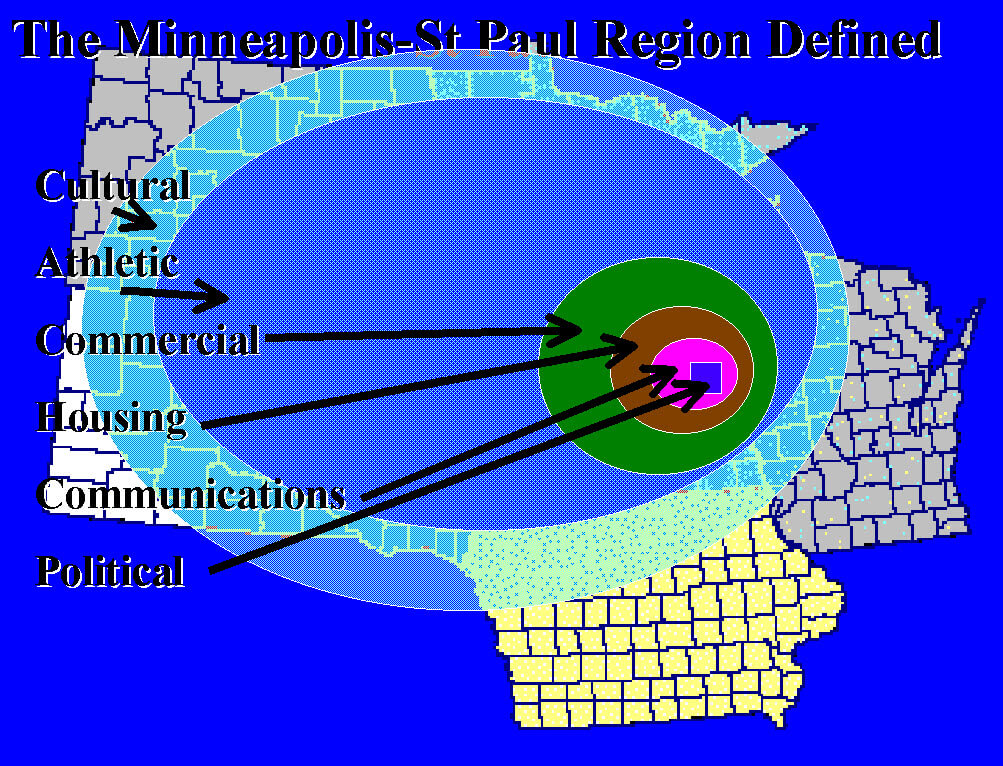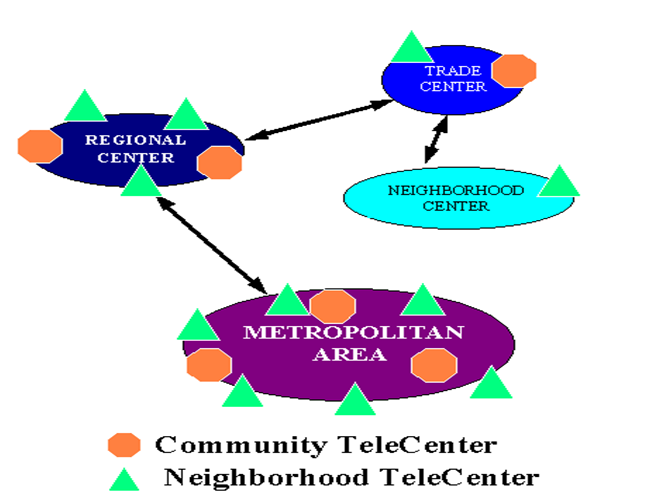INTRODUCTION
The Global Economy has emerged in ways that society is only beginning to understand; not since the dawn of the Industrial Revolution has society been so fundamentally challenged. To successfully exploit the resulting opportunities, society and its institutions must redefine themselves in relevant ways. In the Knowledge Age, time and distance no longer hinder organizations as telecommunication services allow access to “anything, anywhere, anytime”. Employers will embrace all things virtual, including telecommuting, to cut costs while building a presence, local and global. The ongoing evolution of telecommuting (anything that replaces a physical trip and includes tele-medicine, distance learning, teleworking, e-commerce and other applications) will redefine markets as its cost efficiency and convenience overcomes the propensity to maintain the status quo.
Understanding how technology will change core relationships is the key to developing strategies for competitive and economic success. Population redistribution will occur as people gravitate towards those communities that offer them their desired quality of life and the level of telecommuting services they require. Communities previously isolated by time and distance can now be fully integrated into their surrounding regional economic and community development strategies. It is a New World with new opportunities and new challenges. How effectively communities re-structure themselves to capitalize on these new economic realities will determine how well they will compete in the Knowledge Age.
ORGANIZING GLOBALLY
Before one can begin to consider local strategies, it is vital to recognize that global regions exist and that their service areas are likely not to conform to existing political boundaries. A new sense of “regional community” must evolve to ensure that everyone has the opportunity to participate; subsidies required by exclusion must be replaced by strategies for inclusion. Defining the global region for the Minneapolis-St Paul area based upon economic, cultural and other factors, results in a region serving portions of a five-state area before encountering the competing regions of Chicago, Denver and Kansas City. .

SUCCEEDING LOCALLY
TCR examined the types of living environments within these global regions and concluded that there are six types of communitiesdescribed by TCR’s Community Typology. Each representing a unique way of life. Recognizing that regional success depends on the success of each community type, individually and collectively. The Community TeleCenter Network asserts that it is possible for each community type to be made viable even though not every community will choose to do what is required to achieve viability. The six types of communities that have been defined within the broader globally defined economic region are:
CENTRAL BUSINESS DISTRICT | The highly urban downtowns of our major metropolitan areas with populations usually exceeding 200,000 |
INNER CITY NEIGHBORHOOD | The older neighborhoods of those metro areas, typically with small lots, sidewalks, corner stores, good parks and classic architecture (of varying condition) that were developed for pedestrians and transit operations. |
DEVELOPED SUBURBS | Those communities that have been developed for the automobile, featuring low density residential development and separated land use districts; generally built after 1950, etc. |
RURAL TRADE CENTERS | Free standing centers outside of the urban dominance that are the economic center for a 30-50 miles radius; usually with a population over 15,000 |
SMALL TOWNS | Those communities that are smaller than a trade center and that do not have the economic profile that makes it self-sustaining |
FARMS, CABINS etc | All of those areas generally in unincorporated areas |
TENETS OF THE INFORMATION AGE
Reflecting the results of TCR’s e-Consensus Forum® which concluded that community viability is best measured by its ability to attract and employ a sustainable work force, the local goal must be to restore the demographic balance (age, income, education and occupation) within each type of community. It is important to understand that achieving demographic balance does not necessarily mean that each community type can achieve economic independence. To the contrary, each community type must evaluate not only its role within the region but also how it relates to other types; recognition of sub-regional interdependence is required. Without this demographic balance, local employers will not have access to the necessary workforce and schools, health care facilities and other institutions will be unable to effectively serve their community.
There are three factors that must be present for a community to achieve this condition in the Information Age:
- Technologic Parity- each community must have access to the same content and bandwidth as the most advanced type.
- Personal Accessibility- individuals must have the ability to travel between communities quickly and affordably without losing “windshield time“-
- Community Vision- each sub-region must define its unique quality of life and be able to successfully market it.
THE UNIFYING INFRASTRUCTURE
Realizing that infrastructure consists of not only physical systems but also an organizational structure; the Community TeleCenter Network (CTN) integrates communities into the Information Age by creating economic relationships that improve intra-regional effectiveness. The requisite services are made available to the public, private and community sectors creating collaboration for the creation of an enhanced quality of life to attract and retain the workforce required for sustained viability. The TeleCenter is a network of community facilities that work together to develop and deliver content throughout the region while serving as a local technologic catalyst.
The Community TeleCenter Network has been developed to support these six types of communities through the deployment of three types of TeleCenters, with the following purposes and facilities:
- REGIONAL TELECENTER- Providing support services to the Community TeleCenters, the Regional TeleCenters are a key element in the economic infrastructure of the region and the development and distribution of the Suite of Telecommuting Application.

- COMMUNITY TELECENTER- Designed to bring “critical mass” to a regional trade center and its surrounding communities and rural areas, the Community TeleCenter brings state of the art services to the community through collaboration and partnership and would extend its capabilities throughout its service area via the Neighborhood TeleCenters. Theoretically operating 24 hours a day, 7 days a week, the location of the Community TeleCenter is a strategic decision that would leverage other community assets through co-location with a library, recreation center etc.,
- NEIGHBORHOOD TELECENTER- located on business campuses, in a mall, in an apartment complex, on Main Street or wherever they can be justified, the Neighborhood TeleCenter is as necessary in the inner city as it is in small town America. Customized for their specific location, these Telecenters would provide that critical local link for all the services available within the Community TeleCenter:
…the management
To define those needs and translate them into deliverables, the CTN would operate under an integrated ownership/management plan. The Community TeleCenter would strive to bring local partners into the process, thereby expanding those local businesses. As necessary, a community management board would contract with these local providers and others to procure the requisite services. Contract services with government agencies would be a key in ensuring a seamless integration of local technology. Corporate partners would be encouraged to take an equity position to ensure that the services are always maintained as state of the art.
…the feasibility
In order for the Community TeleCenter Network concept to be successful, the region must:
- Engage in new investment strategies that measures the benefit to the region, not just to special interests,;
- Encourage its employers to engage in Telework to maximize the number of employees that would be free to relocate in the community type of their choice (TCR’s works with employers to optimize this through it’s TeleWork Deployment Program),; and
- Ensure that the telecommuting content is available to sustain these remote workers. (TCR’s Community University Concept addresses this issue.).
Discounting the numerous cost benefits to the communities, the intangible benefits to the region, its businesses, communities and families, the bottom line costs can be covered through travel savings and service delivery revenue and the generation of an actual profit. In the worse case, if the CTN were to be deployed as a regional infrastructure, the estimated $20 million cost required to deploy the 40 Minnesota Community TeleCenters would represent about 5% of the cost of a new stadium, or about 3% of the first section of Light Rail Transit.
SUMMARY
The Community TeleCenter Network is based upon values. What kind of community do we wish to live in as we transition into the Knowledge Age? Is the health of our communities and our local institutions a concern? Is it of value to preserve the ways of life represented by the Community Typology? What is our priority- the individual community components or the holistic health of the community itself? Can the region be strong if many of its communities are weak?
Depending upon how society answers these questions, the logic of the CTN will be resolved. The economic case can be made; its underlying assumptions seem irrefutable. The question is simply. Do we have the leadership to capitalize on the opportunities?
AN UPDATE
The evolution of TCR’s work has been the development of the Information Age Community Concept. Originally the Community TeleCenter Network was coupled with TCR’s Regional Transit and Community Alliance concepts with the other strategic components e.g., Community Index, Community Information System, Teck-Trek Conference, Workforce Virtualization. All of TCR’s efforts have recognized this to represent the first comprehensive development plan in Minnesota’s history and the development of the Community Voice. Support tools include the e-Consensus Forum, the Regional Monitor and others. Explore the www.telecommuter.org website for more information.

